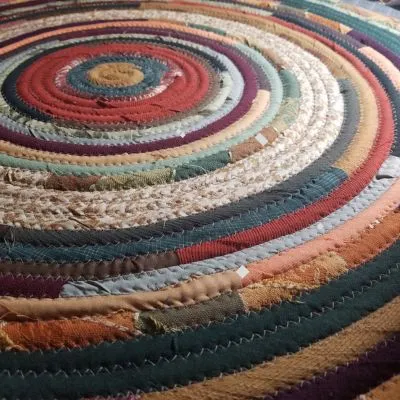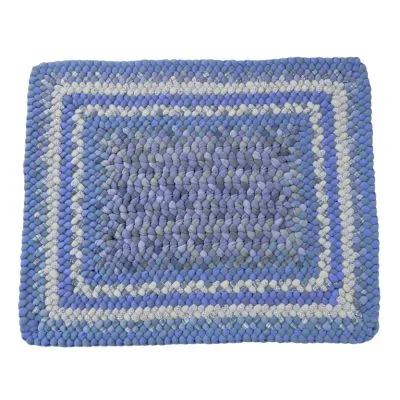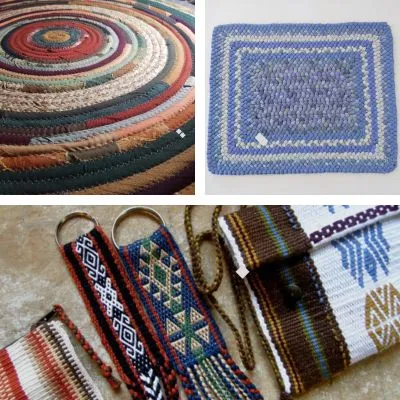Braided fabric is a versatile and durable textile construction that offers a unique combination of strength, flexibility, as well as aesthetic appeal. This unique fabric construction interlocks multiple yarns in different patterns, creating a robust and also flexible fabric. This manufacturing process forms a braided structure resistant to stretching and tearing as well.
The braided fabric combines strength, flexibility, and aesthetic appeal, making it ideal for use in anything from clothes and accessories to industrial applications. This fabric is a popular option for decorative and ornamental uses since the braiding method allows for elaborate patterns and motifs. This article covers everything about it that will help you understand everything about this fabric.
What is Braided Fabric?
Braided fabric is a type of fabric that results from the interlacing of multiple strands of yarn, forming a sturdy, flexible, and durable fabric. Braiding refers to the mechanical intertwining of at least three yarns to ensure no two threads are wrapped around one another. Braiding involves intertwining individual strands to create various patterns and textures.
The materials used to produce these fabrics encompass natural fibers like cotton, wool, silk, and linen and synthetic materials like nylon and polyester. To fulfill specific criteria, a customized braid can also be made using a variety of yarn. The aesthetic appeal and strength of these fabrics make them suitable for various applications.
What is Braided Fabric Made of?
Now you may want to know What fiber is used to manufacture Braided Fabric. The exact materials used to make this fabric can vary depending on the desired properties, but common materials include cotton, wool, nylon, polyester, and various types of synthetic fibers.
Some of these fabrics may also incorporate metal threads, straw, wire, tinsel, or leather to create a unique texture or appearance. This fabric is typically made from multiple strands of yarn or thread that are woven or braided together in a pattern.
Manufacturing process

Several yarn bobbins set on a movable track are found at the bottom of the conventional circular braiding machine. The bobbins in the foundation of the machine move in and out, much like maypole dancers do, to create the braid. Braiding strands create a flexible fabric; the fabric may be stretched in a single direction but contracts in the opposite direction.
Types
Braided fabrics are available in three types depending on the manufacturing process and braiding structures. Each and every kind of this fabric come with unique characteristics and applications. Let’s explore the types of this fabric in detail:
A. Round braided fabric

Round braided fabric, also known as circular fabric, is a popular fabric that is manufactured by intertwining strands of yarn in a circular. The process of braiding involves crossing over strands of material to create a pattern, which can be done in various ways. This type of braided fabric is often used for decorative purposes, such as manufacturing rugs, baskets, and other home decor items.
B. Flat braided fabric

Flat braided fabric is another type of fabric that is produced by interlacing multiple yarns or fibers in a flat pattern. This type of fabric can be made from a wide range of materials, including cotton, polyester, nylon, and various synthetic fibers. They are commonly used in the manufacture of belts, straps, cords, and other types of flexible, durable products.
C. Square Braided Fabric

Square braided fabric is a durable and sturdy fabric that is produced by interlacing four or more yarns in a square pattern. It may be constructed from various materials, including synthetic and natural fibers. This fabric is frequently used to make belts and straps for various uses.
Properties
| Fabric Name | Braided Fabric |
| Manufacturing Material | Cotton, wool, nylon, polyester, metal threads, straw, wire, tinsel, etc. |
| Fabric Durability | High |
| Fabric Strength | Excellent |
| Fabric Flexibility | Good Enough |
| Resistance | Excellent Resistant properties |
| Moisture Absorption | Good Enough |
| Applications | Automotive Products, Clothing and Accessories, Industrial Products, and Sports Equipment |
Key Features of Braided Fabric
Braided fabric comes with several exclusive and impressive features that make it one of the most popular fabrics in the textile industry. Let’s explore some of the key features of this fabric in detail:
a. Durability and Strength
The first and foremost feature of Braided fabric is its excellent durability and strength as well. This is due to the compact and tight structure produced by the interlocking of several yarns or threads, which is resistant to wear and strain. This fabric is less prone to tear, making the fabric a superb option for applications that requires a durable fabric solution.
b. Flexibility and Expandability
Braided textiles are renowned for their flexibility and expandability because many strands of yarn or fiber interconnect to create a braid. Due to its extreme adaptability, this fabric may be tailored to match specific performance needs. Braiding gives the fabric a structure that enables it to bend and flex without breaking, making it perfect for use in flexible items.
c. Excellent load capacity
Braids stand out for having a significantly higher load capacity than comparable items created using other methods. Traditional braids have very little lateral stability. This characteristic makes them easy to sew to other textiles. On the other hand, adding inserts and finishing procedures may make them robust.
d. Resistance Properties
Braided fabrics also come with excellent resistance properties, meaning that they are able to withstand wear and tear from rubbing or scraping against other surfaces. This makes this fabric ideal for use in manufacturers that are subject to frequent friction. Some types of these fabrics are resistant to UV rays, making them ideal for use in products that are exposed to sunlight.
e. Cost-effectiveness
Braided textiles are frequently a cost-effective option for producers because they can be manufactured rapidly and effectively utilizing automated gear. This enables producers to make items that are both high-quality and reasonably priced.
Applications

i. Automotive Products: airbag straps, seat belts, brake lines, drive shafts, and propeller blades
ii. Clothing and Accessories: Belts, shoelaces, jewelry, suspenders, and straw hats.
iii. Industrial Products: Electrical wires, cables, conveyor belts, ropes, and hoses.
iv. Sports Equipment: Archery strings, fishing lines, and tennis strings.
Conclusion
In conclusion, braided is a particular type of textile fabric that comes with several excellent features. This fabric is manufactured in such a way that makes it highly durable with a unique combination of strength and flexibility. The unique combination of properties in the braided fabric makes it a popular choice for different applications. Hopefully, this article may help you understand everything about this fabric.
